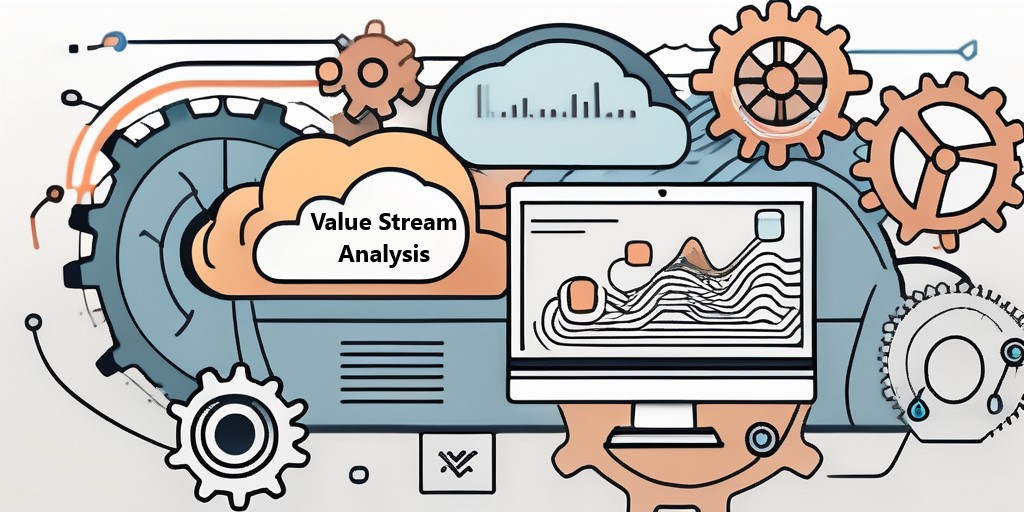
Value stream analysis is a powerful tool that helps organizations improve operational efficiency. It provides a clear view of the entire process, identifying areas of waste and bottlenecks. By mapping out each step of the production or service delivery process, businesses can see exactly where value is added and where it is not. This is essential for businesses aiming to optimize resources and deliver higher-quality products or services.
Understanding the Basics
Value stream analysis is a visual method used to map out every action involved in producing a product or delivering a service. It identifies all the processes that contribute to the creation of value for the customer. However, it also highlights non-value-adding steps, which can then be targeted for improvement. This comprehensive approach gives businesses a holistic view of their operations, allowing them to see how different parts of the system interact.
Through this analysis, companies can distinguish between value-adding and non-value-adding activities. Value-adding activities are those that directly contribute to meeting customer needs, while non-value-adding activities often include unnecessary delays, excess inventory, or redundant processes. Once identified, these inefficiencies can be reduced or eliminated to enhance overall productivity.
Moreover, value stream analysis helps break down complex operations into manageable steps, making it easier to implement targeted improvements. This method is commonly used in lean manufacturing but has broad applications across various industries. Any business looking to streamline its operations, reduce costs, and improve customer satisfaction can benefit from value stream analysis.
The Importance of Value Stream Mapping
At the heart of value stream analysis is value stream mapping, a visual representation of the flow of materials and information through a system. Value stream mapping provides a clear understanding of both the current state of operations and a roadmap for improvement. By documenting each stage of production, it helps businesses see inefficiencies that might otherwise go unnoticed.
Value stream mapping often reveals hidden problems that impede performance, such as excess motion, waiting times, and overproduction. These inefficiencies may seem minor, but over time, they can accumulate and significantly impact a company’s bottom line. Regular analysis allows businesses to stay proactive in identifying these inefficiencies and optimizing workflows accordingly.
Additionally, value stream mapping serves as a collaborative tool, engaging employees from different departments in the improvement process. By involving key stakeholders, businesses can ensure that all perspectives are considered and that improvements align with organizational goals. Furthermore, a well-executed value stream analysis builds a culture of continuous improvement within the company.
How Value Stream Analysis Drives Strategic Decisions
Value stream analysis is not just about identifying waste; it also plays a crucial role in strategic decision-making. By analyzing the data collected from value stream mapping, companies gain insights into resource allocation, customer demand patterns, and production bottlenecks. This data-driven approach enables businesses to make informed decisions that enhance both short-term efficiency and long-term growth.
For example, companies can use this analysis to identify opportunities for automation. Automating repetitive or low-value tasks frees up employee time for more strategic initiatives. Similarly, value stream analysis can help businesses decide whether to invest in new technologies, streamline supply chains, or improve product design.
Furthermore, it supports better capacity planning. By understanding the flow of materials and information, companies can adjust their production schedules to meet demand without overextending resources. This ensures that businesses allocate resources efficiently, reducing the risk of overproduction or stockouts. It helps businesses remain agile in a rapidly changing market.
Overcoming Common Challenges
While value stream analysis is a highly effective tool, businesses may encounter challenges during its implementation. One common challenge is resistance to change. Employees accustomed to established workflows may be hesitant to adopt new practices. To overcome this, businesses should emphasize the benefits of this analysis, such as improved efficiency and job satisfaction.
Another challenge is accurately identifying value-adding versus non-value-adding activities. Some processes, while not directly contributing to value creation, may still be necessary for compliance or safety reasons. In these cases, it’s important to distinguish between essential and truly wasteful activities. Businesses should also ensure that they are collecting accurate data to inform their analysis.
Additionally, companies may struggle with sustaining improvements over time. Analyzing the value stream is most effective when used as part of a continuous improvement process, rather than a one-time effort. To maintain gains in efficiency, businesses should regularly update their value stream maps and track key performance indicators (KPIs). This helps ensure that the organization stays aligned with its operational goals.
The Future of Value Stream Analysis
As businesses continue to embrace digital transformation, value stream analysis will likely evolve to incorporate advanced technologies. Artificial intelligence (AI) and machine learning, for instance, can enhance the analysis by providing real-time insights into production processes. These technologies can help businesses predict bottlenecks, optimize resource allocation, and streamline decision-making.
Furthermore, businesses will increasingly apply value stream analysis beyond manufacturing. Service-based industries, such as healthcare and finance, are already leveraging value stream analysis to improve patient care and transaction processing. As the concept continues to grow, businesses will increasingly view it as a universal tool for enhancing operational efficiency across all sectors.
In addition, the growing focus on sustainability will impact how businesses conduct this type of analysis. As companies strive to reduce their environmental footprint, they will use this to identify ways to minimize waste and energy consumption. This alignment between operational efficiency and sustainability will become increasingly important for businesses in the coming years.
Value stream analysis is a powerful tool for businesses seeking to optimize their operations, reduce waste, and improve customer satisfaction. By mapping out processes and identifying inefficiencies, companies can streamline workflows and make data-driven decisions that enhance overall productivity. While there may be challenges in implementation, the benefits of value stream analysis far outweigh the difficulties. As technology continues to evolve, value stream analysis will become even more critical for businesses looking to remain competitive and sustainable in a fast-changing market.

